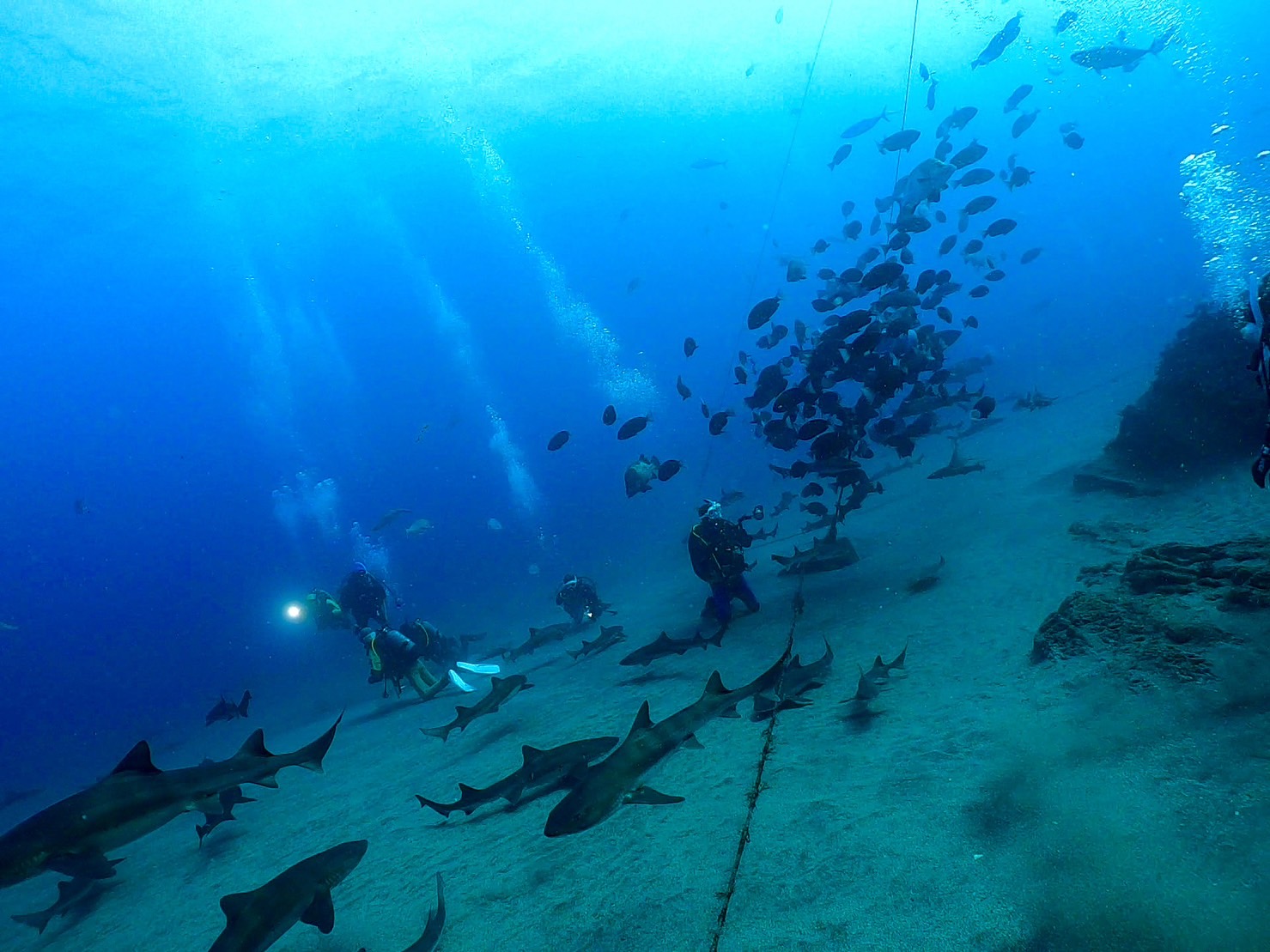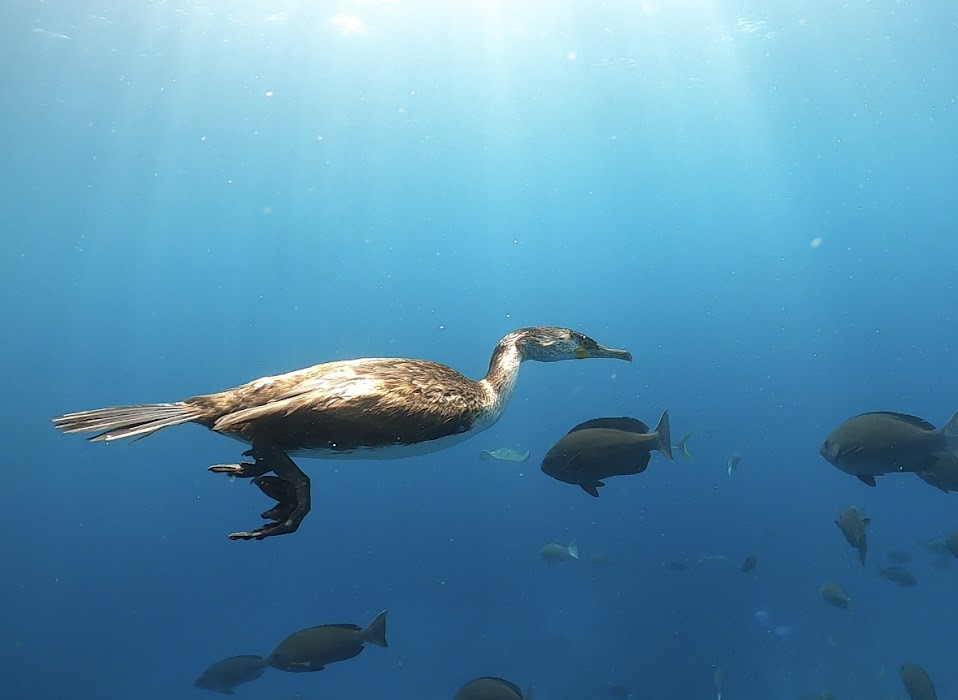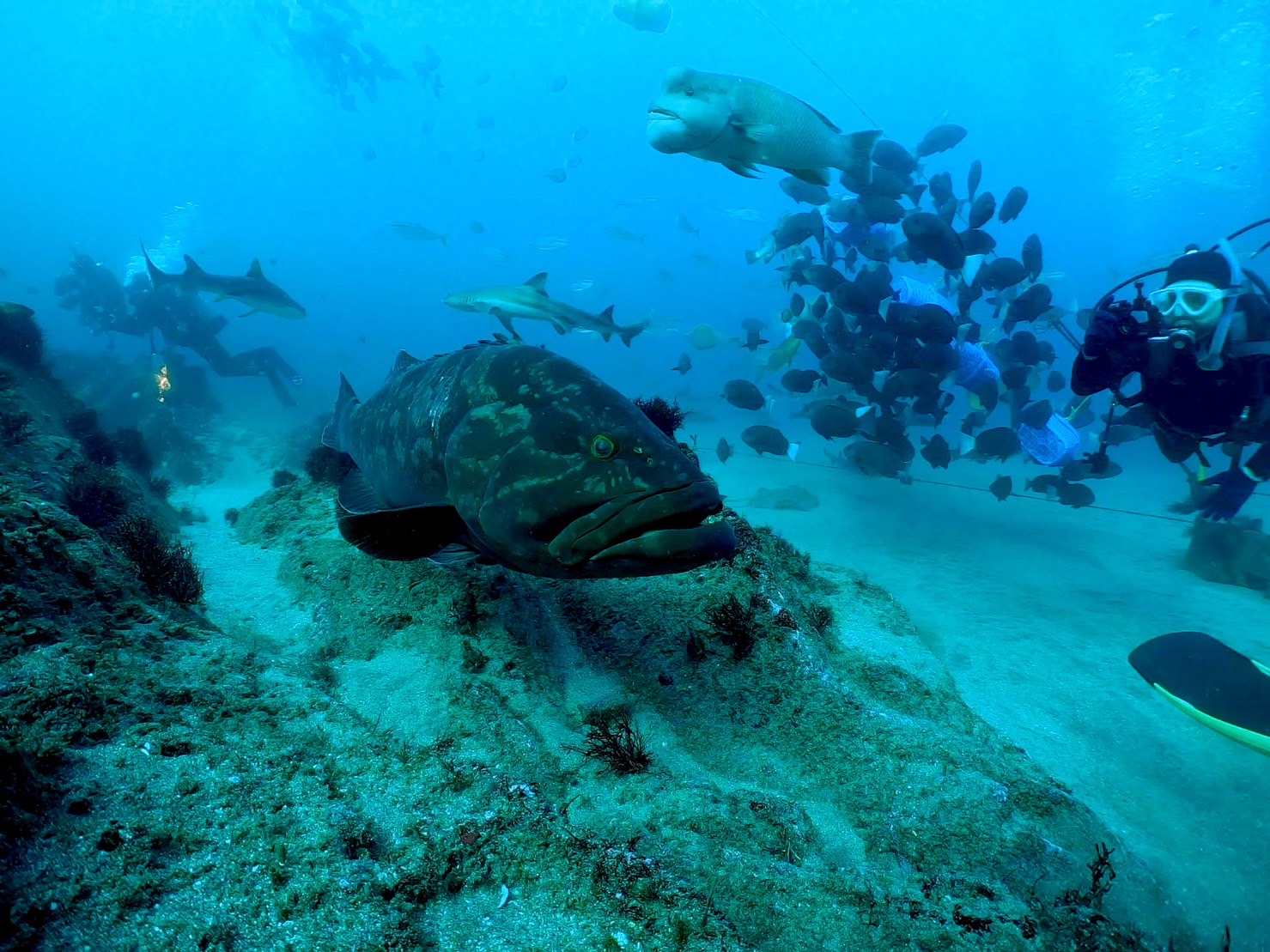Hello everyone! This is Ryoma from Izu Kogen Diving School Shibuya. On January 7, 2024, our first fan diving of the new year took place at the perfect location: Shark Scramble in Ito, Chiba Prefecture! With visibility maybe the best ever at 20-30 meters and under sunny skies, there was minimal current and wave action – a perfect day for diving!

Why so many sharks…?
Local fishermen were troubled by sharks invading their fixed nets, eating small fish, and damaging the nets. Based on a suggestion from the local fisheries cooperative leader, we started baiting under the cooperation of fishermen, leading to the creation of this diving spot! It took over four years to get close to the Dogfish sharks, and it felt special to witness this view, thanks to the initial efforts and hard work. Since then, the number of sharks has increased day by day, reaching the impressive level we see today (^O^)
Tour Highlights
Shark ScrambleIn clear waters, you can swim with hundreds of sharks, offering thrills and excitement. Underwater Bird Watching: From December to early April, you can observe ‘Umiu’ (cormorants) diving underwater to feed. ‘AKKD’ & ‘Delicious HMS’: ‘AKKD’ stands for Stingrays, Kobudai, Grouper, Dogfish; ‘Delicious HMS’ stands for Higedai, Madai, Pufferfish (I made up the latter part).

The charm and safety considerations of deep diving
In deep diving, you can explore deeper than normal dives, experiencing the thrill and adrenaline of discovering a mysterious world. However, with increased water pressure, the risks of residual nitrogen and oxygen toxicity must be considered. Proper training, experience, dive planning, checklist review, and decision-making skills are crucial.
At our shop…
Diving with a Pro Guide: Due to the high risks of deep diving, it’s essential to dive with an experienced professional guide who understands underwater conditions and provides necessary support. Adequate Training and Experience: Deep diving requires special skills. With adequate training and experience, you can enjoy safe and fun diving. Dive Planning: Pre-dive planning is important. Plan your dive time and depth, and manage your gas effectively. Checklist Review: Before diving, check your equipment and checklist to be fully prepared. Decision-Making Skills: Always be aware of your surroundings during diving and be ready to respond safely. Report any abnormalities to your guide immediately.
We recommend divers with at least 10 dives, who have no problems with descent or equalizing, and who experience minimal stress underwater.
Introducing Marine Life
Let’s take a closer look at some marine creatures!
Here’s a fun discussion about them being potentially edible (^▽^)/
Stingray:
The soothing member Basic Information Scientific name: Hemitrygon akajei (Bürger 1841) Disc length: Can exceed 80cm. Characteristics: Flat body with mouth, nose, and gill openings on the underside. They lack scales, and the area near the spiracle behind the eye is yellow. A row of spines runs along the midline of the disc, with orange edges underneath. The tail has one hard, large spine. Habitat: Common in shallow bays and flats in southern Japan, from Hokkaido’s entire coastline to Kyushu’s southern coast, the East China Sea, Pacific Ocean, Seto Inland Sea, and the Ogasawara Islands. Behavior: Viviparous, giving birth to 5-10 young from May to August, usually at night. They live in shallow sandy areas or flats and often bury in the sand. They mainly eat crustaceans and annelids.
As Food Stingrays are known for their deliciousness and various cooking methods, though their poisonous spines pose a danger. Caution is needed when active near beaches or flats, but as food, they hold high value.
Grouper:
The tsundere member Basic Information Scientific name: Epinephelus bruneus Bloch, 1793 Body length: Can reach up to 1.2m, weighing over 50kg. Characteristics: Among Groupers, they have a lower body height and a pointed head. They have a brownish body with dark diagonal stripes, which become less distinct as they grow. Habitat: Marine fish found along coasts and continental shelf areas, rocky reefs, and eelgrass beds. Distributed throughout Japan, from Aomori to Kyushu, the Izu Islands, and Okinawa.

As Food Groupers are considered the ultimate delicacy for their rich flavor and texture. In Kyushu, known as ‘Ara,’ they are popular in hot pot dishes. Farmed groupers are also available, offering a more stable price compared to wild ones. As a special fish enjoyed mainly in high-end restaurants, they are loved by many food connoisseurs.
Dogfish Shark:
The main attraction Basic Information Scientific name: Triakis scyllium Müller and Henle, 1841 Body length: About 1.5 meters. Characteristics: Spindle-shaped with a small head. They have nictitating membranes (eyelids), two dorsal fins, and the pelvic fin is located behind the first dorsal fin. The anal fin starts behind the base of the second dorsal fin. Habitat: Found in inner bays, sandy areas, seaweed beds, and brackish waters. They live along the coasts of the Sea of Japan and the East China Sea, the Pacific Ocean, the Seto Inland Sea, and around Hachijo Island, from Aomori to Kyushu.
As Food Dogfish sharks are small, commonly found in bays, and are considered harmless. Though not widely known as food, they are not bad in taste. Boiling and serving with mustard and vinegar miso is recommended. Other cooking methods include simmering, frying, and sautéing. Sharks and rays are said to pair well with butter. While not commonly eaten, certain cooking methods can make them a tasty treat.
In Conclusion
Shark Scramble in Ito is too great an experience to miss even once! The average depth is deeper, and it’s boat diving, so some experience is necessary, but Izu Kogen Diving School Shibuya will support you responsibly! At Izu Kogen Diving School Shibuya, we offer deep diving training courses, prioritizing safety while ensuring a memorable and fantastic experience. We look forward to your participation!
For participation requests, please contact us via our official LINE account (⌒∇⌒)